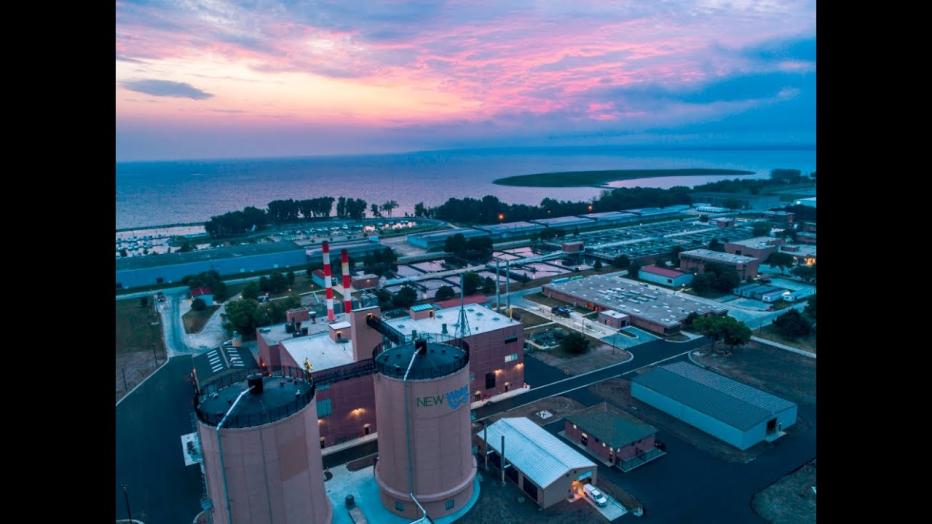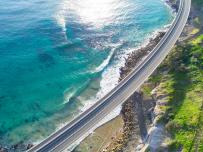
Robust infrastructure establishes the backbone of productive, economically strong communities as assets essential to commerce, trade, public safety and quality of life. But what if we told you that the average American spends 12+ vacation days stuck in traffic every year? Or that most American water systems have been in operation for 75 to 100 years – well past their intended lifespans?
America’s future will be shaped by the infrastructure choices we make today – reinforces that infrastructure’s impacts carry far beyond our lifetimes.
When it comes to designing investible infrastructure that addresses the big issues we face in the world – unprecedented urbanization, catastrophic climate threats and both human and natural resources constraints, there’s no partner more capable than us – after all, Engineering News-Record named us the No. 1 Firm on their Top 500 Design Firms list for the seventh consecutive year in 2024.
Just consider the work we’ve done with NEW Water – the brand of Green Bay Metropolitan Sewer District – to upgrade its solids handling system and change how it values its resources for the future.
Green Bay: building for tomorrow, starting now
Water covers 70% of Earth, but freshwater accounts for just 3% of that number – and the Great Lakes, a series of interconnected freshwater lakes spanning more than 750 miles of North America, make up a little more than 20% of that surface freshwater.
Located on the edge of the Great Lakes is the City of Green Bay, Wisconsin. Home to the Frozen Tundra of Lambeau Field and over 100,000 people (and a considerable amount of Cheeseheads), Green Bay is the state’s oldest settlement.
Its water utility NEW Water, serves 15 municipal neighboring communities and collects, treats and reclaims about 45 million gallons of wastewater each day from its two wastewater facilities.
Protecting the Great Lakes is embedded into NEW Water’s mission and they knew that to continue providing safe, reliable service and preserving its water resources, they needed to replace their solids handling facility. And they partnered with Jacobs to do it, involving us every step of the way, including preparation of the Solids Management Facility Plan, detailed design, services during construction and commissioning of the Resource Recovery and Electrical Energy generation system, or R2E2, project.

Confronting aging infrastructure and changing demands
Most of NEW Water’s solids handling equipment started operation in 1976, meaning it had well-passed its useful life. Like any utility, they couldn’t afford to run its equipment to failure because many people and businesses depend on their safe, reliable and cost-effective service. Additionally, both NEW Water incinerators operated at over 90% capacity to handle the wastewater demands, triggering the regulatory need to start facilities planning.
Jacobs prepared a facility plan to evaluate alternatives for managing solids. The plan included a comprehensive evaluation of the different solids management technologies available. We considered 73-unit processes initially and combined them into 17 process trains – or a series of treatment steps – for evaluation against NEW Water’s objectives.
One of the most important objectives was that the selected alternative should have a significant role in achieving NEW Water’s long-term goal of reduced fossil fuel use. Alongside a diverse stakeholder group, we evaluated the alternatives, using Monte Carlo statistical simulations to calculate and record the results of thousands of different “what if” cases to reveal the range of possible outcomes considering 15 variables, including energy prices, their probability of increasing and the inputs that most affect the results.
Ultimately, NEW Water selected an alternative that uses anaerobic digestion, thermal oxidation, power generation and multiple waste heat recovery systems that together represent a change in philosophy: valuing waste as a resource to recover, rather than something to dispose.
A new era in resource recovery
Following the facility plan, NEW Water engaged us to lead design of the R2E2 process identified in the facility plan. R2E2’s design includes two, 110-foot tall, 65-foot diameter digesters that will break down biodegradable material in the absence of oxygen and reduce the volume of material to be processed. This methane gas will then be captured and used to produce electricity – resulting in an estimated 50% reduction in energy costs during the first year of operation.
Additionally, the facility’s greenhouse gas emissions are expected to be reduced by about 22,000 metric tons per year – or the equivalent to removing about 4,800 vehicles from the road – and its nutrient recovery process will generate a fertilizer for commercial sale, bringing in additional non-rate-based revenue. R2E2 will also allow NEW Water to accept new types of waste, such as dairy, sugar and food processing waste, which historically would’ve been spread onto nearby fields or land-filled. These wastes can increase digester energy production and provide a consistent and environmentally-friendly disposal outlet.
We also emphasized reusing as much existing infrastructure as possible, including repurposing aerated sludge storage tanks for digested biosolids holding and utilizing existing tanks’ phosphorus release process – furthering the commitment to changing the way resources are viewed.
The R2E2 project is helping NEW Water continue to provide safe and reliable service – and is a model for how choices made about our infrastructure and resources today will shape generations to come.
About water at Jacobs

Addressing challenges like climate change, water scarcity, aging infrastructure and emerging contaminants, managing this essential resource has never been more complex. From drinking water treatment and reuse to water resource recovery and resilience, we’re working with our clients to protect communities, industries and the environment, and provide them with the water resources they need to thrive.












































